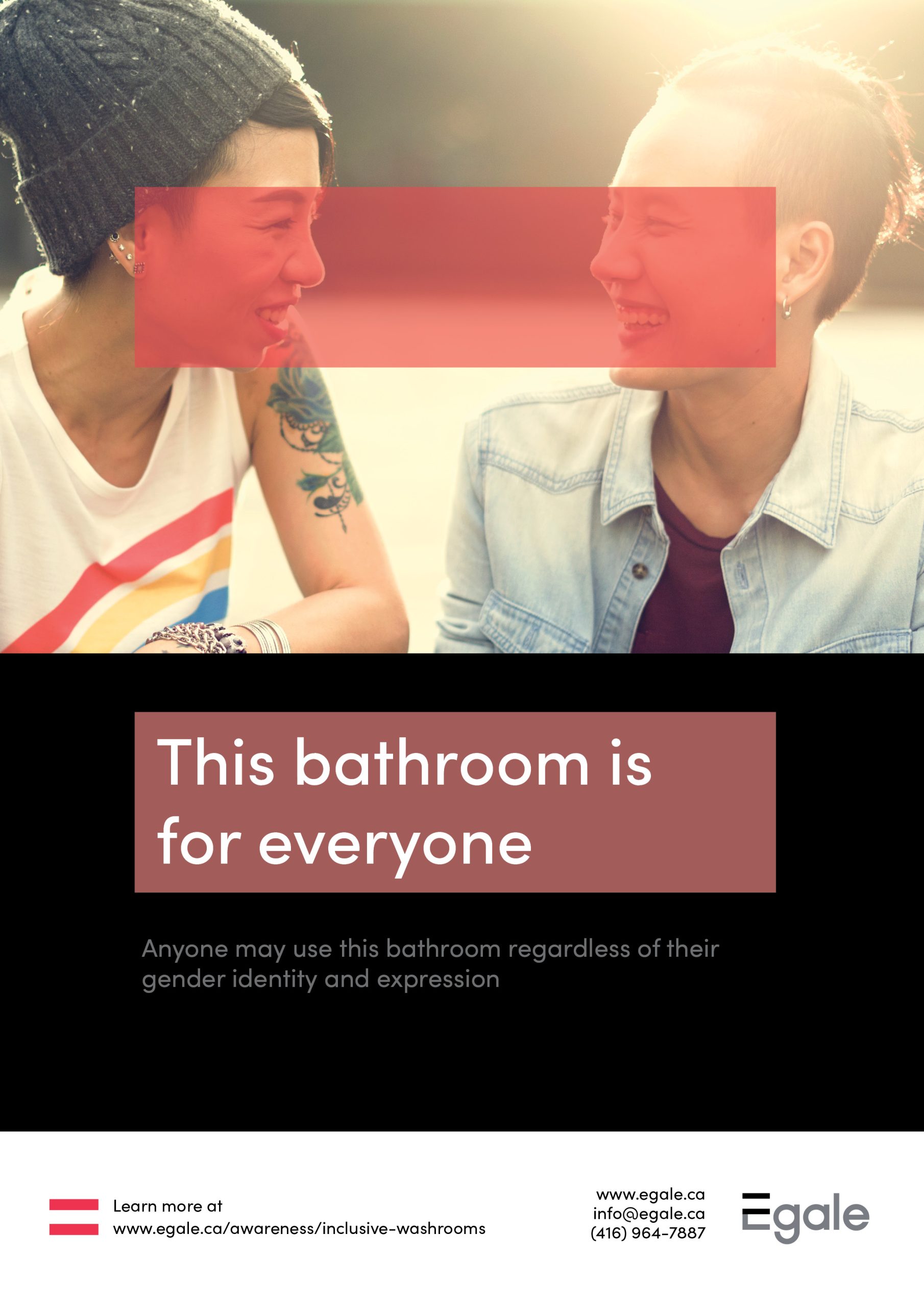See downloadable washroom posters at the end of this post
Having all gender bathrooms is a step in the right direction, and is even becoming the norm when it comes to making your event, school, or workplace more inclusive for trans and gender diverse people. To help make life a little easier, we’ve laid out everything you need to know about inclusive, all gender washrooms and provided you with some resources so you can get started today!
First things first, all gender or inclusive bathrooms can be one stall or multi-stalls. For many trans and gender diverse people, gendered bathrooms (typically labelled “Men’s” and “Women’s”) are a place where harassment, violence and gender policing* can occur if they are perceived to be in the wrong space. Even when no overt harassment or violence occurs, gendered bathrooms are often a space filled with microaggressions** when other occupants react with surprise or confusion. Over time, microaggressions can become a source of anxiety, fear and discomfort that trans and gender diverse people experience when accessing public washrooms – and when you’ve got to go, you’ve got to go.
*Gender policing: Gender policing happens when normative gender expressions are imposed and enforced on those who are perceived to be failing in order to comply with the typical gender expressions of their presumed gender. For example, a woman with short hair is misgendered and mistaken for a man in a women’s bathroom because normative gender expressions presume that women have long hair.
**Microaggressions: indirect, subtle, or unintentional discrimination against members of a marginalized group.
Changing signs and changing minds
While the easiest solution may be to designate a single stall accessible bathroom as the all gender bathroom, this segregation is not the entire solution to inclusivity. While important to those who may want some more privacy, single-stall bathrooms don’t need to be gendered to begin with. After all, the one in your home isn’t, because that would be weird.
It is understandable that most spaces have been structured and built with gendered bathrooms already. In these cases, the best practice is to change the signs on the bathrooms to indicate that a) anyone may use them, and b) what types of facilities are inside (stalls, urinals, change station, etc.) so that the user may choose the one most suitable for them. If changing the signage is not a possible option, consider hanging up a poster like the ones below inside each gendered bathroom to encourage occupants to trust that everyone is in the right place and to discourage transphobic attitudes, comments and behaviours.
Here are some tips and resources to combat common arguments against all gender bathrooms:
“What if this enables predatory men to use the bathroom as a place to assault women?”
a) This is a problem solely to do with predatory men and has nothing to do with trans and gender diverse people. Trans and gender diverse people should not have to suffer on account of the actions of predatory men.
b) Studies and accounts actually show that trans and gender-diverse people experience more assault in gendered bathrooms.
c) Are we really preventing sexual assaults and violence by segregating bathrooms? Does that truly work to protect women? If an individual is determined to enter a washroom or change room to assault those inside, the signage on the washroom is not going to stop them and they do not have to identify in any particular way to gain access.
“Why should trans and gender diverse people receive special privileges now? Gendered bathrooms have worked for the majority of people for the longest time.”
a) Choosing to use a bathroom that is the most comfortable and appropriate for you is not a privilege, it is a right.
b) You have most likely shared a bathroom with trans people for your whole life and it’s time to start making sure everyone feels safe and comfortable using the bathroom.
As with most allyship practices, new structures and policies will take some time to get used to as we work to unlearn previous ways of thinking. It is vital to be proactive in inclusive practices, to make sure that the work of inclusion does not solely fall on those who are already being marginalized.
That concludes the toilet training basics!
Downloadable posters
Posters for the inside of your all gender washroom



Posters for the inside of your inclusive washroom


